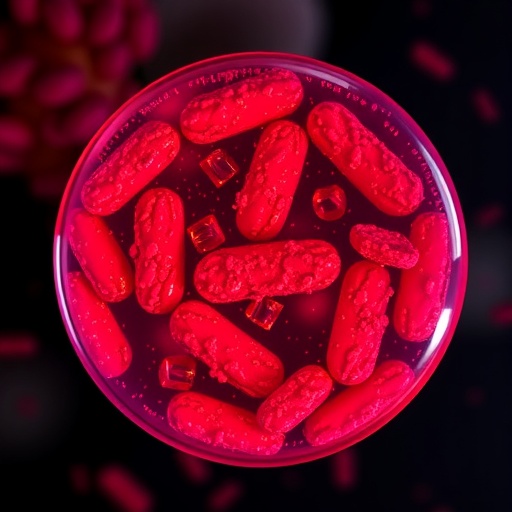In a groundbreaking development that could reshape our understanding of human exposure to environmental pollutants, a team of scientists has successfully quantified micro and nanoplastics circulating in human blood using an advanced analytical approach involving pyrolysis-gas chromatography–mass spectrometry (Py-GC–MS). This pioneering research pushes the frontier of microplastic detection to a remarkable new precision, shedding light on how these pervasive contaminants infiltrate biological systems at the smallest and most insidious scales.
Microplastics—plastic particles less than five millimeters in size—and their even tinier counterparts, nanoplastics, have emerged as ubiquitous pollutants resulting from the breakdown of larger plastics or from engineered nanomaterials used in consumer products. Previous studies have detected these particles in marine organisms, atmospheric samples, and even in food products, raising alarms about their potential impact on human health. However, the direct measurement of micro and nanoplastics in human biological fluids has been fraught with technical challenges, primarily due to their minuscule size and the complexity of biological matrices.
The team led by Brits, van Velzen, Sefiloglu, and colleagues has circumvented these challenges by deploying Py-GC–MS, a technique that thermally decomposes plastic particles into smaller, identifiable chemical fragments, which are then separated and characterized through gas chromatography and mass spectrometry. This approach allows for a sensitive and specific identification of micro and nanoplastics, differentiating them from the myriad of organic and inorganic compounds naturally present in human blood.
.adsslot_1wIcUilMgm{ width:728px !important; height:90px !important; }
@media (max-width:1199px) { .adsslot_1wIcUilMgm{ width:468px !important; height:60px !important; } }
@media (max-width:767px) { .adsslot_1wIcUilMgm{ width:320px !important; height:50px !important; } }
ADVERTISEMENT
Collecting blood samples from a representative cohort, the researchers meticulously prepared the samples to remove cellular components and other interferents, ensuring that only particle-bound polymers were subjected to analysis. Through precise thermal degradation, they decoded the plastic-derived molecular fingerprints, enabling quantitative assessments of the types and amounts of micro and nanoplastics present. The results compellingly confirmed that these particles are not only present but circulating within the human bloodstream, a finding that propels significant concerns about their systemic effects.
The ability to detect and quantify micro and nanoplastics in blood introduces a new dimension to studying chronic exposure and potential health risks. Since blood is the primary medium for transportation of substances throughout the body, microplastics detected here could feasibly translocate to various tissues and organs, potentially triggering inflammatory responses or interfering with cellular function. The implications extend from toxicology to epidemiology, opening avenues for investigating correlations between plastic pollution exposure and diseases.
One of the critical advances of this research lies in its sensitivity—detecting plastic particles down to the nanoscale, a feat that had eluded many conventional analytical methods such as microscopy or spectroscopic identification alone. Nanoplastics, due to their size, have a much higher likelihood of crossing biological membranes and entering intracellular environments, thus posing more significant risks. Prior studies with less sensitive methodologies may have underestimated human exposure levels, making this work a vital recalibration of the field.
Moreover, the study highlights the importance of standardizing analytical protocols for environmental contaminant biomonitoring. Py-GC–MS not only ensures reproducibility but also provides polymer-specific information, revealing the nature of the plastics present. This enables researchers to trace back possible sources—be it industrial emissions, degradation of consumer plastics, or even medical devices—informing policy and mitigation strategies.
While the health consequences of micro- and nanoplastic accumulation remain to be fully elucidated, this breakthrough sets the stage for comprehensive toxicological assessments. Chronic low-level exposure might manifest as subtle inflammatory or immunological changes, possibly contributing to ailments such as cardiovascular diseases, neurodegeneration, or metabolic disorders. The capacity to accurately measure blood-borne microplastics is essential for longitudinal cohort studies investigating these hypotheses.
The findings raise important questions about the pathways through which micro and nanoplastics infiltrate the human circulatory system. Inhalation of airborne particles, ingestion of contaminated food and water, or dermal absorption could feasibly introduce plastics into the bloodstream. Understanding the relative contributions of these routes will be critical for effective interventions and public health recommendations.
Furthermore, this research underscores the pervasive and insidious nature of plastic pollution, revealing that the environmental crisis extends beyond visible litter or ecological harm to direct human internal exposure. The invisible infiltration of microplastics at the cellular level calls for urgent action, not only in plastic waste management but also in product design and regulatory frameworks governing plastics manufacturing.
From a technical perspective, the use of pyrolysis-GC–MS is especially notable for its multiplexing capability, wherein complex samples can be deconvoluted to detect multiple polymer types simultaneously. This advances our knowledge of the chemical diversity of circulating microplastics and may reveal emerging contaminants not previously recognized in human biomonitoring.
Complementary to the analytical innovations, the research emphasizes rigorous contamination control throughout sample handling and processing, addressing a significant concern in microplastic studies where external silica, dust, or plastics from laboratory environments can confound results. The team’s meticulous protocols set a benchmark for future studies seeking to avert false positives and data artifacts.
The broader ramifications of this work lie in envisaging micro and nanoplastics as a class of particulate pollutants akin to ultrafine particulate matter in air pollution studies, necessitating integration of plastic contamination into environmental health paradigms. This integration could stimulate the development of global monitoring networks, analogous to those tracking airborne particulates or chemical contaminants.
Additionally, this discovery prompts the medical and scientific community to rethink diagnostic and therapeutic strategies. For instance, the potential role of circulating microplastics as biomarkers of exposure or disease progression remains an unexplored frontier. Their physicochemical properties might influence drug delivery, immune interactions, or biomolecular pathways within the body.
Given the surge in synthetic plastics production globally, understanding the scale and impact of human microplastic exposure is increasingly urgent. This study represents a pivotal step in bridging environmental science with human health risk assessment, leveraging state-of-the-art analytical chemistry to reveal hidden dimensions of plastic pollution’s reach.
In the coming years, expanding on this foundational work will require integrating high-throughput Py-GC–MS methods with complementary techniques such as electron microscopy, Raman spectroscopy, and in vitro toxicological models. Such multidisciplinary approaches will elucidate not only the prevalence but also the biological fate and effects of micro and nanoplastics.
In summary, the detection and quantitation of circulating micro and nanoplastics in human blood using pyrolysis-gas chromatography–mass spectrometry marks a scientific milestone. It unveils a previously invisible exposure pathway, with profound implications for public health, environmental regulations, and future research directions on the health impact of plastic pollution.
Subject of Research: Detection and quantification of micro and nanoplastics in human blood using pyrolysis-gas chromatography–mass spectrometry.
Article Title: Quantitation of micro and nanoplastics in human blood by pyrolysis-gas chromatography–mass spectrometry.
Article References:
Brits, M., van Velzen, M.J.M., Sefiloglu, F.Ö. et al. Quantitation of micro and nanoplastics in human blood by pyrolysis-gas chromatography–mass spectrometry. Micropl.&Nanopl. 4, 12 (2024). https://doi.org/10.1186/s43591-024-00090-w
Image Credits: AI Generated
Tags: advanced analytical techniques for microplasticschallenges in microplastic measurementenvironmental pollutants in human healthhuman exposure to environmental contaminantsimpact of microplastics on biologyimplications of microplastics in medicinemeasuring nanoplastics in biological fluidsmicroplastics detection in human bloodnanoplastics in consumer productspyrolysis-gas chromatography-mass spectrometryquantifying plastic particles in bloodscientific breakthroughs in pollution detection






